Overview
Koalas are an icon of the Australian continent. Incredibly popular with tourists, hundreds of thousands of people have “hug a koala bear” on their holiday checklist. (And who can blame them?!)
These arboreal marsupials are unique animals, dwelling in the treetops and getting most of their moisture from a diet of leaves. They are slow-moving, expert snoozers, who can spend the majority of their day dreaming amongst the branches!
In this guide, we take a detailed look at koala biology, reproduction, lifestyle, and conservation. By the time you’ve finished reading, you’ll be an expert on these cuddly Aussies!
Koala Marsupials
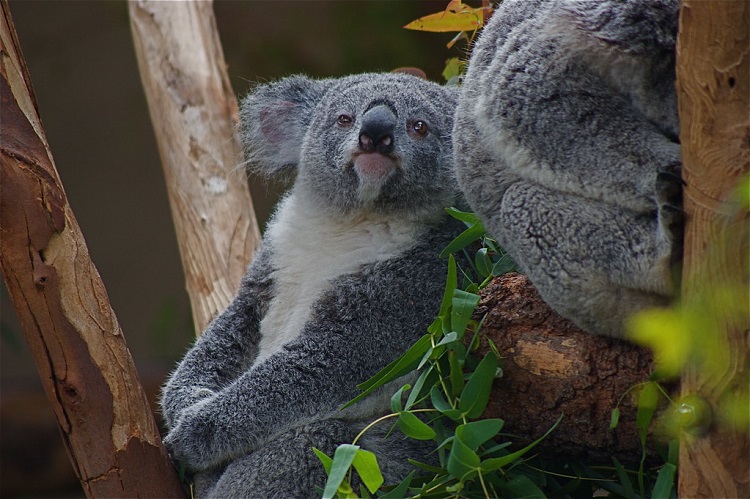
Koalas are mammals that give birth to underdeveloped young, which continue to develop in a pouch outside of their body. This characteristic classifies them as “marsupials”.
However, as they share many differences to other marsupials, koalas are classified into their own taxonomic family, known as Phascolarctidae.
History of Koala
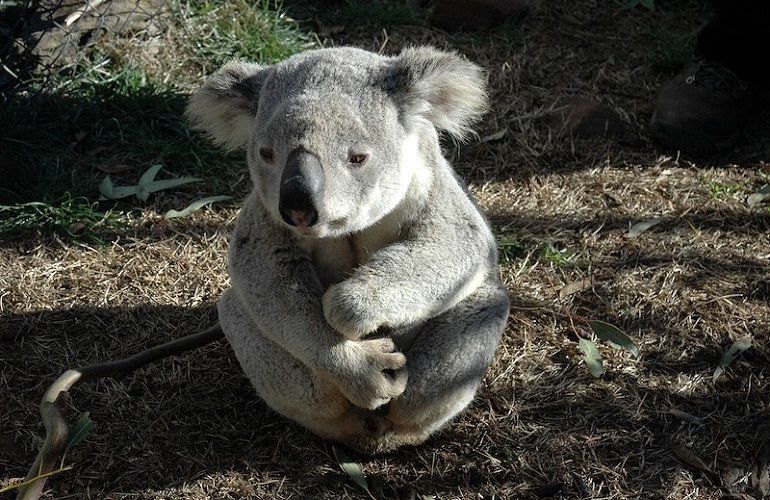
It’s believed that Koalas first evolved on the continent of Australia as it drifted apart from the Antarctic landmass 45 million years ago. Some fossil remains of animals that closely resemble Koalas have been found that date back some 25 million years.
It’s thought that Koalas evolved to eat eucalyptus as the Australian climate changed and became much drier.
The indigenous people of Australia arrived about 60,000 years ago. Koalas play a key role in Aboriginal culture, story-telling, and legends. They were also hunted by Aboriginals as a source of food, but their population was not adversely affected by humans until the arrival of Europeans in 1778.
The first European to make a written record of a koala was John Price. He included them in his writings about a journey in the Blue Mountain region close to Sydney in 1798.
Etymology of Koala
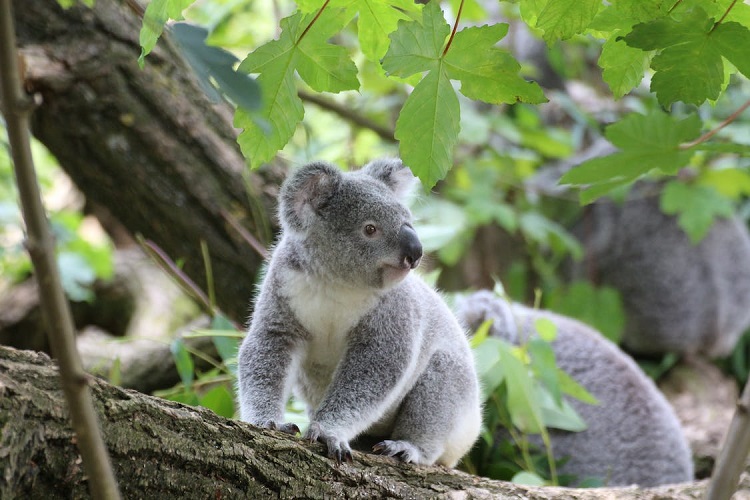
The word “koala” is believed to derive from the indigenous Dharug people. It means “no water” or “no drink” and is thought to relate to how Koalas get their moisture from leaves.
In other indigenous languages across Australia, they are also called “dumbirrbi”, “marrambi”, “borobi” and “dumbribbi”.
Koala Phylogeny and Evolution
The first tree-dwelling koalas are believed to have evolved from a ground-dwelling ancestor, similar to a wombat. It may be that they evolved to live in the branches so they could reach a less-competitive food source.
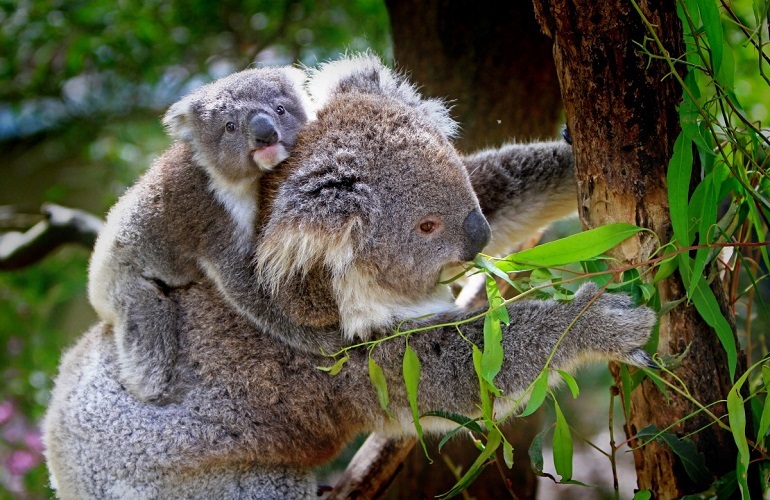
Koalas used to be more plentiful across Australia than they are today. Fossils have been discovered in central, western, and southern areas, where rainforest was previously present. Six genera and 18 fossil species of the koala are known to have existed. These have all been found in either Queensland or South Australia.
Fossils of prehistoric koalas from the late Oligocene and early Miocene Perikoala are more closely related to present-day koalas than older fossil species such as Nimiokoala. This type is believed to be the most primitive relative of these modern-day animals.
Genetic Variations
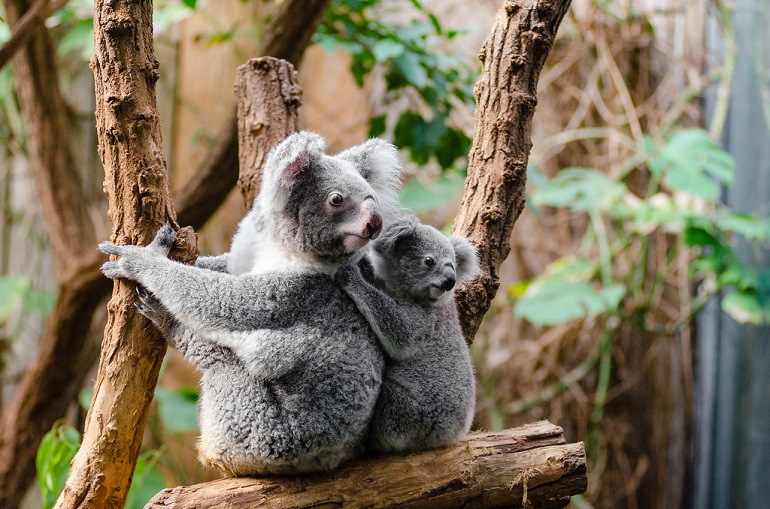
Studies have taken place to determine how changes in koala population sizes have affected genetic variation.
Danish, German, and American scientists examined mitochondrial DNA samples from 14 historic museum specimens from different regions and time points. They found that each specimen only had one of four DNA variations, the same that are found in modern-day Koalas.
This means that koalas have low genetic diversity. Therefore, they may be less capable of adapting to changes in their home environment and resisting diseases.
Characteristics and Adaptations of Koala
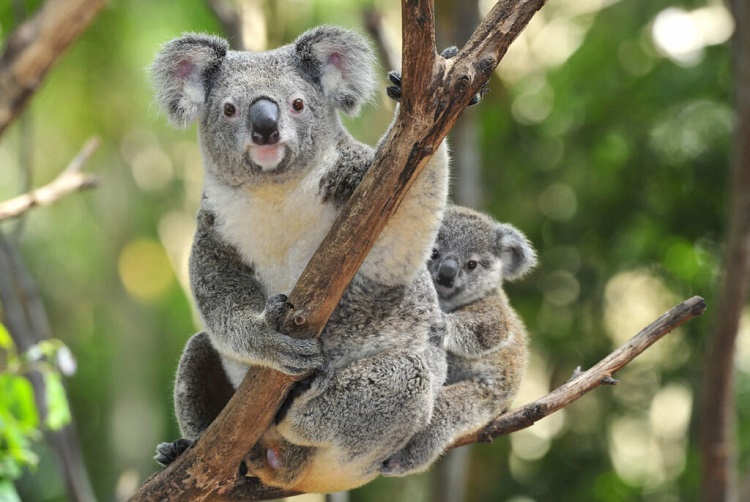
Koalas are particularly well-adapted to life in the treetops.
They are unique in that they do not have an external tail, which is often used by arboreal creatures for balance. However, there are some remnants of a tail in their skeletal structure, so they are likely to have had a tail in the past.
Although they lack a tail, koalas are experts at balancing on branches. They have a sleek and muscular physique, with strong, lengthy limbs that support their weight as they climb. Both the front and back legs are similar in length, and they have powerful thigh muscles to propel them up tree trunks.
Koalas also have special paws that are perfectly designed for climbing. They have rough pads and long, sharp claws. Each paw has five digits, just like human hands, but two of them are opposed so they can grab onto the branch with a tight grip.
On their hind paws, one digit lacks a claw, while the second and third digits are combined together to create a double grooming claw for easy tick removal.
They also have very thick fur that shields them against very hot and very cold temperatures. In heavy rain, their coat repels water to keep them dry and cozy. The color of a koala’s coat differs depending on where they live. Southern koalas usually have dark brown coats, while those that live in the north tend to be lighter gray.
These tree animals have areas of white on their chins, inside the ears, and on the neck and chest. They will sometimes have little patches of white on their back legs, too.
The fur on their bottom is particularly thick, so it acts as a comfortable cushion when they sit down on hard branches!
Interesting Facts About Koalas
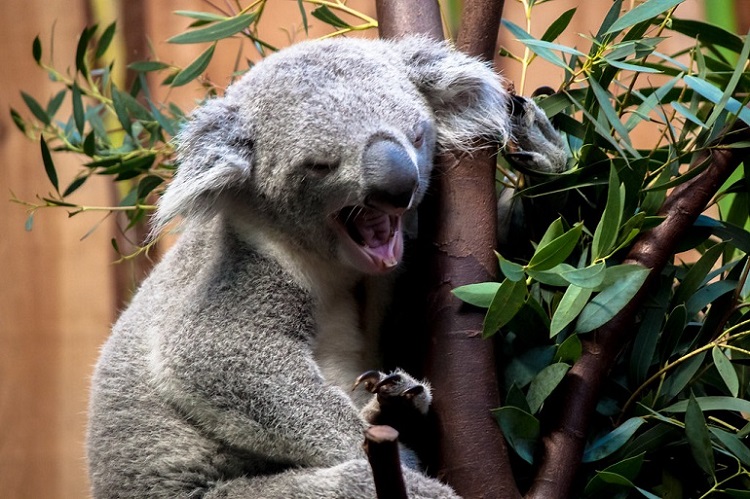
Koalas have quite large heads in comparison to their bodies, but their brains, relative to their size, are much smaller than their close relatives. Some experts believe this is because large brains use more energy, so koalas have smaller brains to help them survive on their low-energy diets.
Koalas have a resting heart rate of around 70-140 beats a minute. However, they also have sinus arrhythmia, which means that their breathing and heart rate are often out of sync. This condition makes it difficult for vets to measure a koala’s heart rate accurately.
Koalas have individual fingerprints, just like humans! They are the only non-primate to have unique fingerprints. Luckily, it’s easy to tell the difference between a koala print and a human print – otherwise, we could get locked up for a koala’s crime!
Koala Habitat
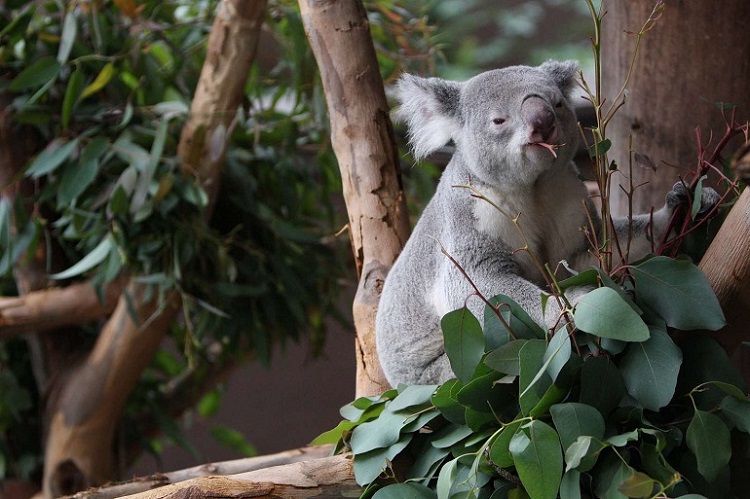
Koalas like to live in open forests and woodlands, but they will inhabit any area that has a suitable amount of food-bearing trees.
They are often found in higher numbers where the soils are fertile, and there is a watercourse nearby, but they are also known to live in areas that have been recently urbanized where possible.
Koalas are distributed across large areas of Victoria. Queensland, New South Wales, and a smaller area in South Australia. Over the last 2 centuries, their numbers have reduced, but they are still present across the continent.
Queensland koalas are highly concentrated in the southeast of the state, which brings them into close contact with humans for space. Some local extinction events have occurred as a result of eucalyptus forest clearing for human development.
Is a Koala a Herbivore?
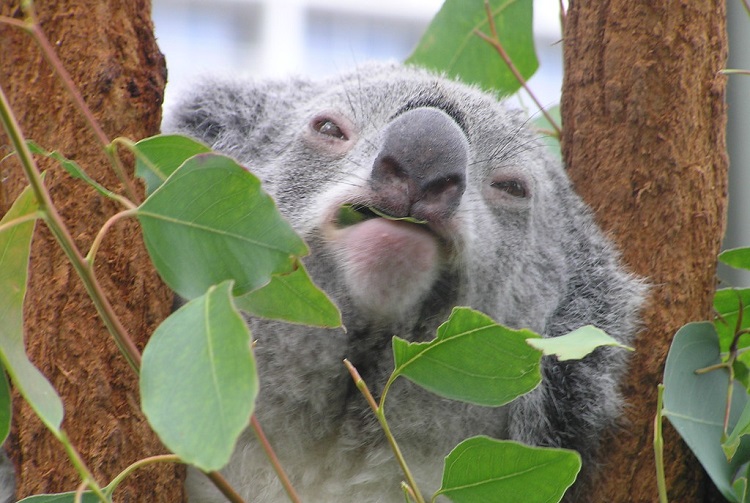
Yes, koalas are herbivores. They are known for having a pretty simple diet. Koalas eat mostly eucalyptus leaves, but they will also eat paperbark, brush box, and bloodwood tree leaves.
Koalas eat about 500 grams of leaves a day. They get almost all of their water from leaves, so they don’t need to come down from the tree tops to drink unless it’s very hot. Leaves don’t provide much carbohydrates. This is why koalas are slow-moving and sleep a lot to conserve their energy levels.
Interestingly, koalas are able to break down toxic compounds present in eucalyptus leaves. Alongside gliders and possums, koalas are the only animals that can eat this poisonous plant. This allows them to take advantage of a food source that other creatures cannot.
Koalas have ridged molars, which they use to grind down eucalypt leaves into a paste. This enhances nutrient absorption in their stomach. The toxins in the leaves are carried to the liver, where they are excreted in their urine and feces. The remaining plant matter is then digested as normal.
Another cool feature of the koala digestive system is their lack of gut bacteria at birth. Most animals are born with this already present, but koalas must acquire it from their mothers outside of the womb. The mummy koala excretes a runny fecal liquid called “pap”, which the baby eats up to gain the bacteria needed to digest leaves as an adult.
We agree this sounds rather gross – but it’s also an amazing biological feature!
Ecology and Behavior of Koala
Let’s delve deeper into koala’s relationship with their environment and other animals of the same species.
Activities of Koala
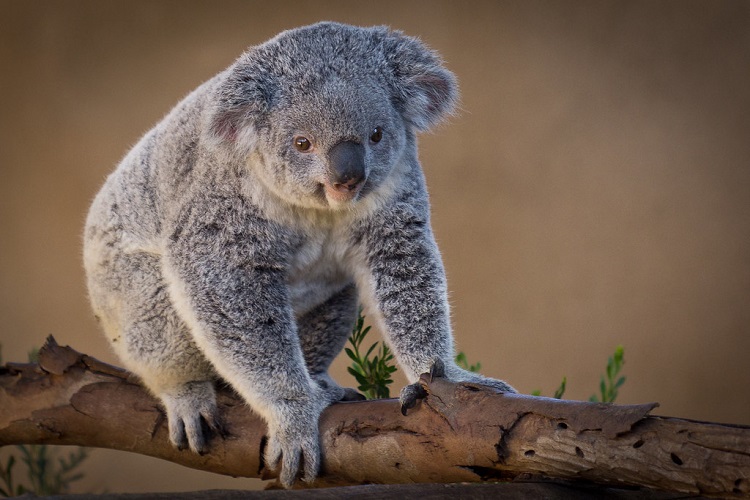
Koalas are nocturnal animals, which are known for their long snoozes in the treetops. In the daytime, they make themselves cozy on the fork of a tree branch, and koalas sleep for up to 18 hours at a time!
It’s believed that koalas are so sleepy due to their small brains and low-energy diets. For the short time that they are awake, they will spend most of their time eating.
Social Spacing of Koala
Koalas require a lot of space per animal. In fact, each koala needs about one hundred trees in its home range to support its lifestyle. This is a problem as the forests of Australia are being destroyed to make space for human development.
Reproduction and Development
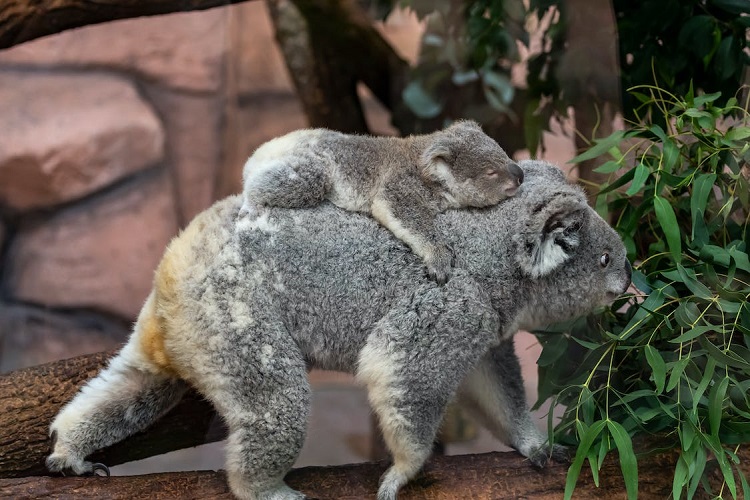
Koala breeding season runs from around August to February. During this time, koalas move about a lot more, and the males will bellow more often. At this time of year, any young koalas from the previous breeding season will leave their mothers to find their own territory.
Female koalas start breeding when they reach 3-4 years of age, usually having one baby a year. Sometimes, wild females will have offspring less frequently, depending on the conditions. Female koalas live for 12 years on average and will have about 5 or 6 babies during their life.
Once the baby is conceived, it is born just 35 days later. The newborn koala is called a joey, and looks like a tiny, pink jelly bean! It is about 2 centimeters long, completely blind, deaf, hairless, and weighs less than a gram.
Of course, this baby koala is not ready for the outside world yet! It makes its way from the mother’s birth canal, climbing toward the safety of her pouch. The joey makes this journey all by itself, using its amazing sense of touch and smell, tiny claws, and strong forelimbs to reach its destination.
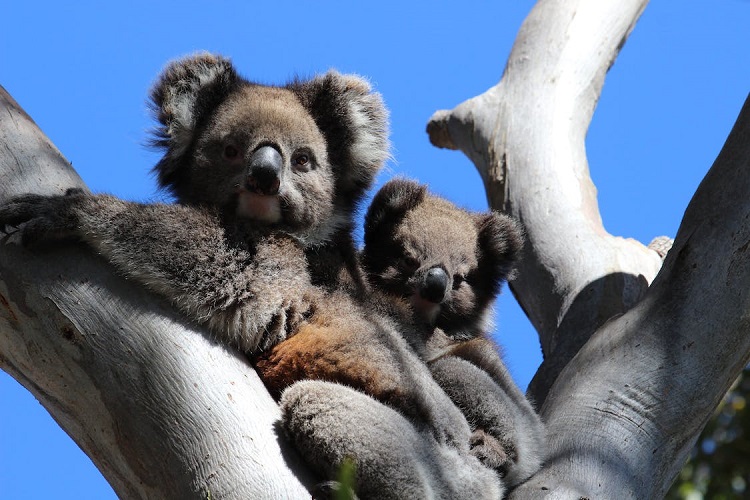
Once it gets inside the mother’s pouch, the joey attaches itself to one of its mother’s two teats. It remains latched on to this teat, keeping it safely attached to a food source. The mummy koala keeps her muscles contracted so that the joey doesn’t fall out.
It feeds on its mother’s milk for the first 6 or 7 months, while it grows and develops. After 22 weeks, the joey opens its eyes and will peep its little head out of the pouch! Then it will start to feed on the mother’s “pap” as well as milk so that it gets all the bacteria it needs for efficient digestion later in life.
As the joey gets bigger, it will come out of the pouch, cling to its mother and start to eat fresh leaves. The young koala will stay with their mom for around 12 months or more until a new joey is born. When this happens, the previous joey will leave to find its own feeding range.
Health and Mortality
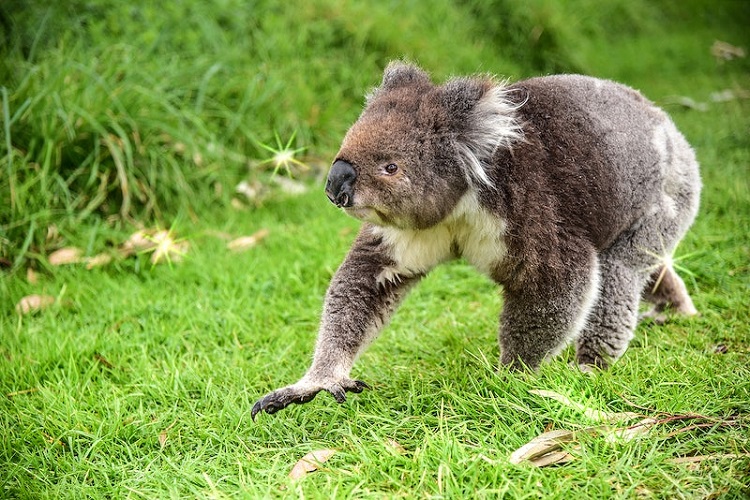
Koalas have few natural predators, but they suffer from a variety of illnesses that can influence their lifespan. Chlamydia is a kind of bacterial infection that affects a large percentage of koalas in South Eastern Queensland.
This disease weakens the koala’s immune system, leading to blindness and problems with their reproductive organs. In severe cases, it can make females infertile. In fact, infertility caused by chlamydia is one of the reasons koala numbers are declining.
Aside from disease, koalas are also at risk from food competition as eucalypt forests decline, pesticides, traffic injuries and deaths, and disturbance by humans. They are also sometimes attacked by domestic animals such as dogs and cats.
Koalas Family Life
Koalas may share overlapping areas of territory if they live in socially stable groups. The overlapping trees are where most social interaction between individuals takes place, thus making these trees very important to koala communities.
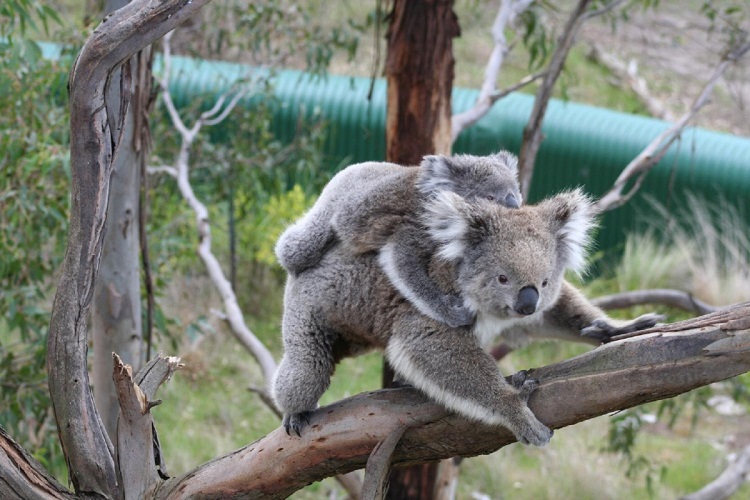
The home range of koala populations can be very large, but the size will vary depending on the quality of the habitat. If there is a good density of food-bearing trees, koalas may have a smaller home range.
These clever Aussies are able to easily identify which tree belongs to which koala, so they don’t accidentally stray onto another’s patch.
Koalas like to stick to their own home grounds, becoming very attached to them. Even if a neighboring koala dies, they won’t move into their range for around a year. This is likely because their scent markings will linger for some time after they have died.
When young koalas are sexually mature, they leave their mother’s home territory and find a range of their own. They look for another breeding group that they can join, and this desire is more important than simply finding an area with suitable food trees.
Sometimes, young male koalas will become transient, hanging around the fringes of other stable groups, waiting for the perfect opportunity to latch on to the community.
Each tree inside a home range, food-bearing or not, is very important to a koala. If a tree is removed, it causes the community great stress. If several trees are removed, it can result in community disbandment. The koalas are forced to relocate, which puts them at risk of malnutrition and predation.
If home ranges are destroyed, or an obstacle is placed between eucalyptus trees (such as buildings or roads), koalas are often left completely homeless. They cannot simply “move” to the next bunch of suitable trees, as these often belong to another koala and cannot support two individuals.
Human Relations
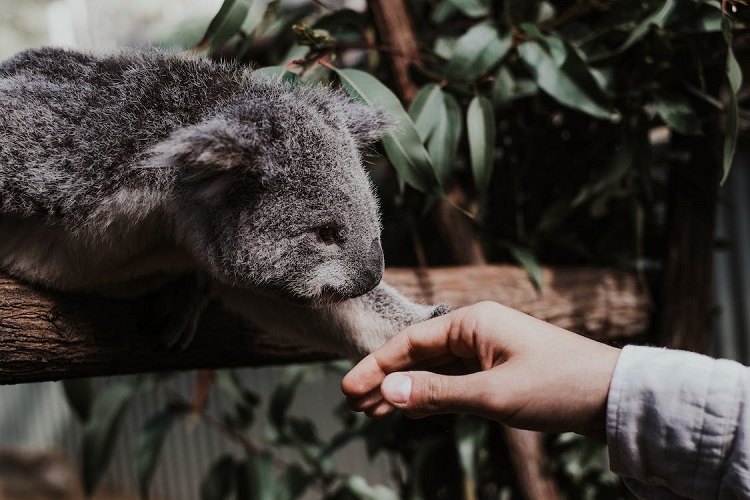
Koalas have had a close cultural relationship with people for hundreds of years.
Cultural Significance
The koala is a well-loved creature, synonymous with Australia. They are very popular with tourists and visitors to wildlife parks in the country. Koalas are often featured in games, adverts, soft toys, cartoons, and as mascots for sports teams.
In 1998, koala tourism is believed to have brought more than a billion Australian dollars to the economy! Almost half of all visitors to Australia said that they wanted to see a koala during their trip. Their cute and cuddly appearance is a sure factor in their popularity.
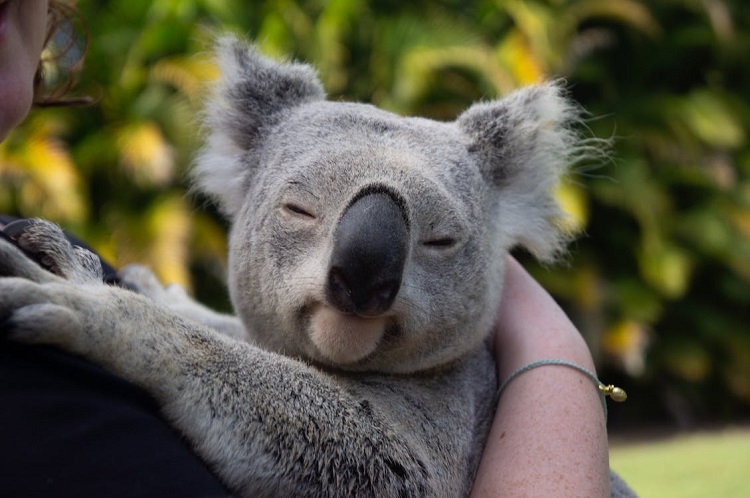
Aside from tourism, koalas have long held a place in indigenous culture. Aboriginal dreamtime stories often feature this adorable animal. The Tharawal people tell a mythical story about a koala that helped to row a boat and bring them to Australia.
Other stories talk about how koalas lost their tails. They believe that a kangaroo chopped it off to punish the koala for its’ greed and laziness. Indigenous peoples in Victoria and Queensland respect the koala as a wise creature that offers sound advice.
What Is Koala Diplomacy?
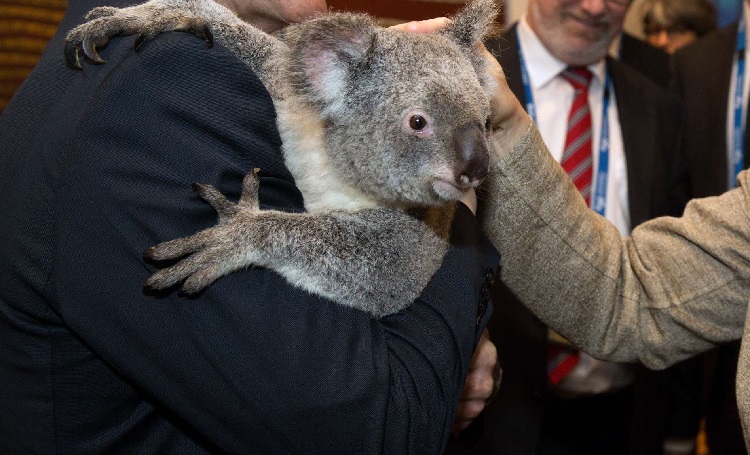
Interestingly, koalas have played a role in foreign diplomatic relations. Perhaps it’s their irresistibly cute faces or their cuddly teddy bear-like bodies? Who knows for sure, but these furry creatures have swooned international leaders and statesmen for decades.
In 1934, Prince Henry the Duke of Gloucester made a visit to the Sydney Koala Park Sanctuary. He loved “the bears” and had his photo taken with one. This photo was featured in a famous newspaper called the Sydney Morning Herald.
Koalas became ever more popular after the end of World War II. During this time, Australian tourism was increasing, and many koalas were exported to captivity in overseas zoos.
Many famous people had their pictures taken with koalas, including Queen Elizabeth II, Pope John Paul II, President Bill Clinton, Nelson Mandela, and Mikhail Gorbachev.
During the G20 Brisbane Summit in 2014, several world leaders, including Barack Obama and Vladimir Putin, had their photos taken with koalas. This is where the term “koala diplomacy” was first coined. It became the Oxford Word of the Month in December 2016.
Koala diplomacy is also used to describe the loan of koalas to many zoos. With their adorable appearance and gentle demeanor, it’s little wonder that koalas are a great tool to foster international relationships!
Conservation and Threats to Koala
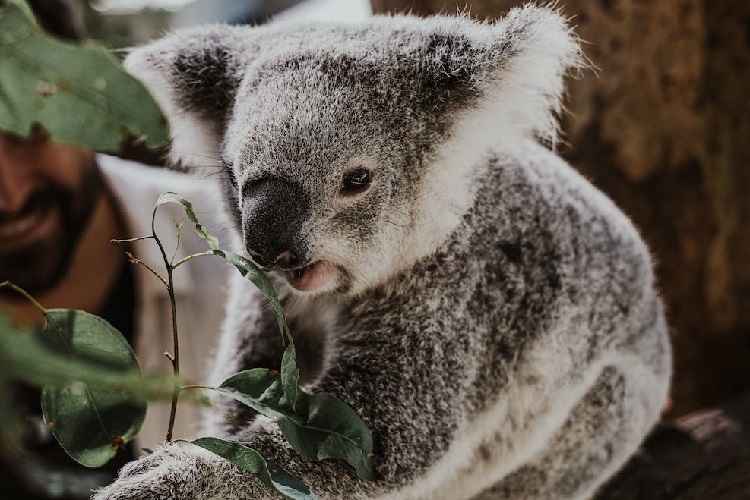
Koalas were initially classified as “Least Concern” on the IUCN Red List – but they were reassessed in 2014 and classed as “Vulnerable”.
In New South Wales, the Australian Capital Territory, and Queensland, the EPBC act listed koalas as in danger of being wiped out in these areas in 2022. This koala population had been monitored since 2012 and deemed to be declining at a worrying rate over the past ten years.
One of the greatest threats to koala bears is habitat fragmentation and destruction. In coastal regions of Australia, urban development is the main culprit, while in rural areas, koala habitat is cleared to make space for agriculture.
Forests are also cut down to make wood products, further diminishing available habitat. Australia ranked fifth in the world for deforestation rates in 2000. Since Europeans arrived on the continent, koala populations have decreased by over 50%.
Increased urbanization undoubtedly poses a threat to koalas, but these animals are still able to survive in urban environments if there are enough trees. Koalas that live in urban areas are more at risk from traffic and dog attacks.
Around 4000 koalas are killed by domestic dogs every year, and many injured koalas are admitted to wildlife hospitals after being hit by cars. To help prevent road accidents, the Australian government is considering wildlife crossing areas that will direct koalas to an underpass or other walkway, thus avoiding the road.
FAQ’s
Is a Koala a Bear?
Koalas certainly look like a bear. With their fluffy ears, big noses, and chunky bodies, they closely resemble the teddy bear toys that children love. However, koalas are not “bears”, they are a type of marsupial.
Marsupials are mammals that have a pouch. They give birth to very underdeveloped young that continue to grow in the pouch outside the womb. Real bears do not have a pouch and give birth to live, fully developed young.
How Are Koalas Related to Kangaroos?
They are both marsupials. This means that they share a common ancestor and are, therefore, closely related. Because of this ancestral link, koalas actually have more similarities to kangaroos and wombats than they do with bears.
Is Koala Endangered?
The Australian government has designated the koala bear as an endangered species. This is due to a sustained decline in their population as a result of climate change, deforestation, and serious bushfires that have resulted in habitat loss.
Conclusion
With their round faces, cute fluffy ears, and chunky noses, koalas are truly adorable creatures. Unique to the Australian continent, these remarkable animals have incredible biology and an unusual lifestyle.
Unlike most mammals, these bear-like marsupials live solely on a diet of leaves, which are so low in energy that they must sleep up to 18 hours a day!
Sadly, koala bears are under increasing pressure from the effect of climate change and human-induced habitat destruction. Their numbers are decreasing rapidly, and they have now been designated an endangered species by some organizations.
If you would like to help these cuddly marsupials, you can contact the Australian Koala Foundation to find out more about their conservation efforts.












